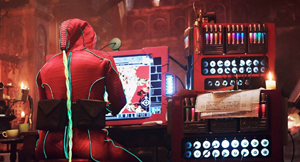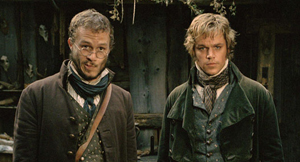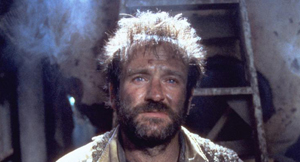The text below is taken from Neon magazine [UK, Dec 1996]

Terry Gilliam thought a warts-and-all Twelve Monkeys docu would be a blast. And then he saw it.
“Making this kind of documentary, it’s hard not to want things to go disastrously wrong,” explains film graduate Keith Fulton.. “Something of the magnitude of the director pulling the boat over the mountain. Or the director losing his mind in the jungle. But we knew we would never get that.”
“We wished for disaster, sure”, stresses his partner Louis Pepe. “But we were making a film about Terry Gilliam. We knew something would go wrong.”
Not so much a Hearts of Darkness or a Burden of Dreams, The Hamster Factor – Fulton and Pepe’s documentary of the making of Twelve Monkeys – offers instead an intimate and emotional portrayal of Gilliam and his internal conflicts. Five months into the filming and a year in the editing, the drama hinges on Gilliam’s notorious mistust of the Hollywood system, battling to stay true to his artistic vision without pandering to Hollywood blockbuster dictums.
The documentary, premiered at the London Film Festival on November 14 [1996], was an idea conceived by Gilliam himself, who chose the two film grads after contacting local colleges’ film departments in their home town of Philadelphia. Yet despite Gilliam wanting them on set, things weren’t so easy. “We were given a 13-page contract for a $1500 fee”, laughs Fulton, if that tells you anything about red tape.”
“Terry was the only person who wanted this documentary to be made,” adds Pepe. “It’s amazing how paranoid this industry is. People were afraid we were out to get footage of Bruce Willis naked.”
Adopting a stay-close-to-Terry strategy, Fulton and Pepe were slowly accepted as part of the team. But Bruce Willis, with his entourage of assistants, trainers and bodyguards, was something of an obstacle. “We were told to stay away from him”, explains Pepe with post-stress amusement. “Don’t point the camera at him, don’t even look at him and don’t speak to him unless he speaks to you first. He didn’t trust us at all, until eventually it became apparent that we were serious about it, sticking out for, essentially, our lunch and dinner.
Having edited 130 hours of footage down to an 87-minute documentary, Fulton and Pepe allowed the cast and crew a sneak preview. They were only asked to remove one scene.
“Bruce didn’t want it in,” admits Fulton. “It was a scene we had titled Old Habits Die Hard, of Terry getting angry at Bruce. He had trouble getting him out of his Die Hard character. But it was a shame it had to go because it ends positively. Bruce gets it right and Terry starts jumping up and down ecstatically.”
“But,” adds Pepe positively, “Terry tells us Bruce actually really liked the documentary. So that at least is fairly gratifying.”
Gilliam himself, though, was less enthusiastic. “We were in touch with Terry throughout,” says Pepe. “But I think he was a little disappointed the film was so much about him. There’s a certain embarrassment that he’s so much in focus.”
“We have got hours of film about how things like the suit was designed, typical making-of footage,” confesses Fulton. “But after the [Hollywood marketing preview] screening of Twelve Monkeys was such a disaster, and the effect that had on Terry, it was clear that this was the more interesting documentary to make.
As intriguing, accomplished and incisive as The Hamster Factor is, Fulton and Pepe have no desire to make another behind-the-scenes documentary.
“We’re not making any more movies about making movies,” Pepe declares flatly. “It’s like holding up a mirror to something that’s actually not very nice to look at.” GINA MORRIS
















